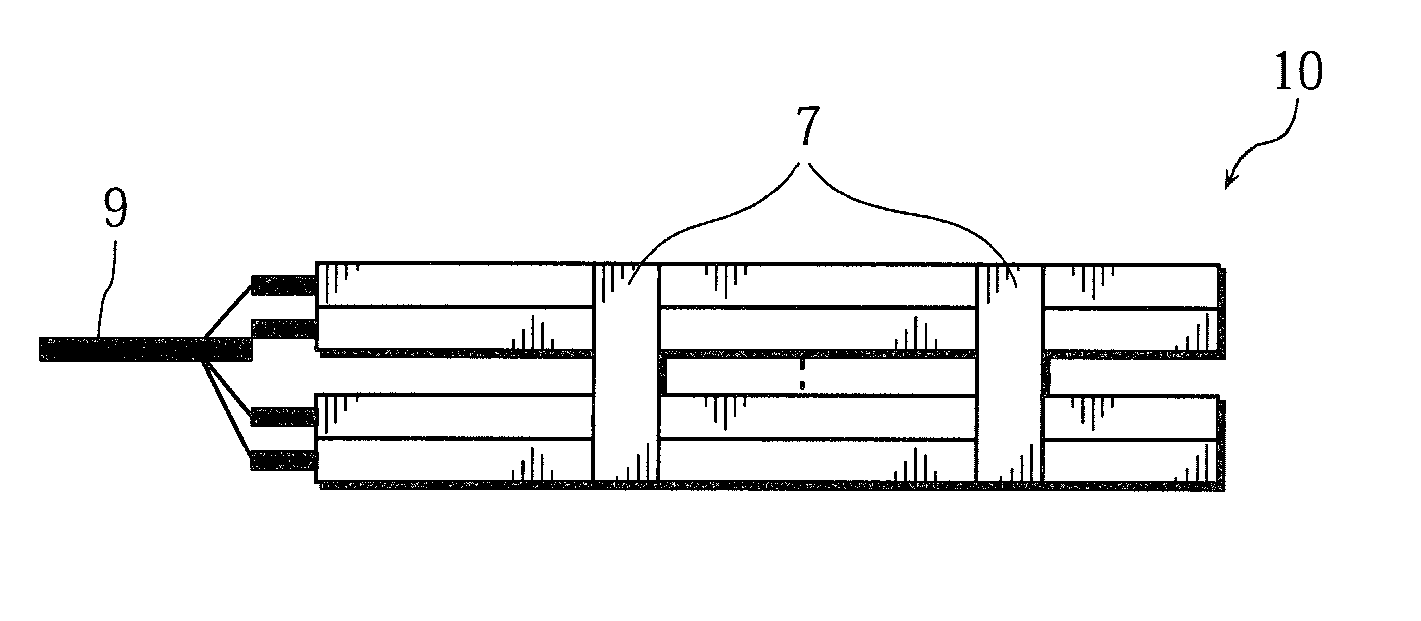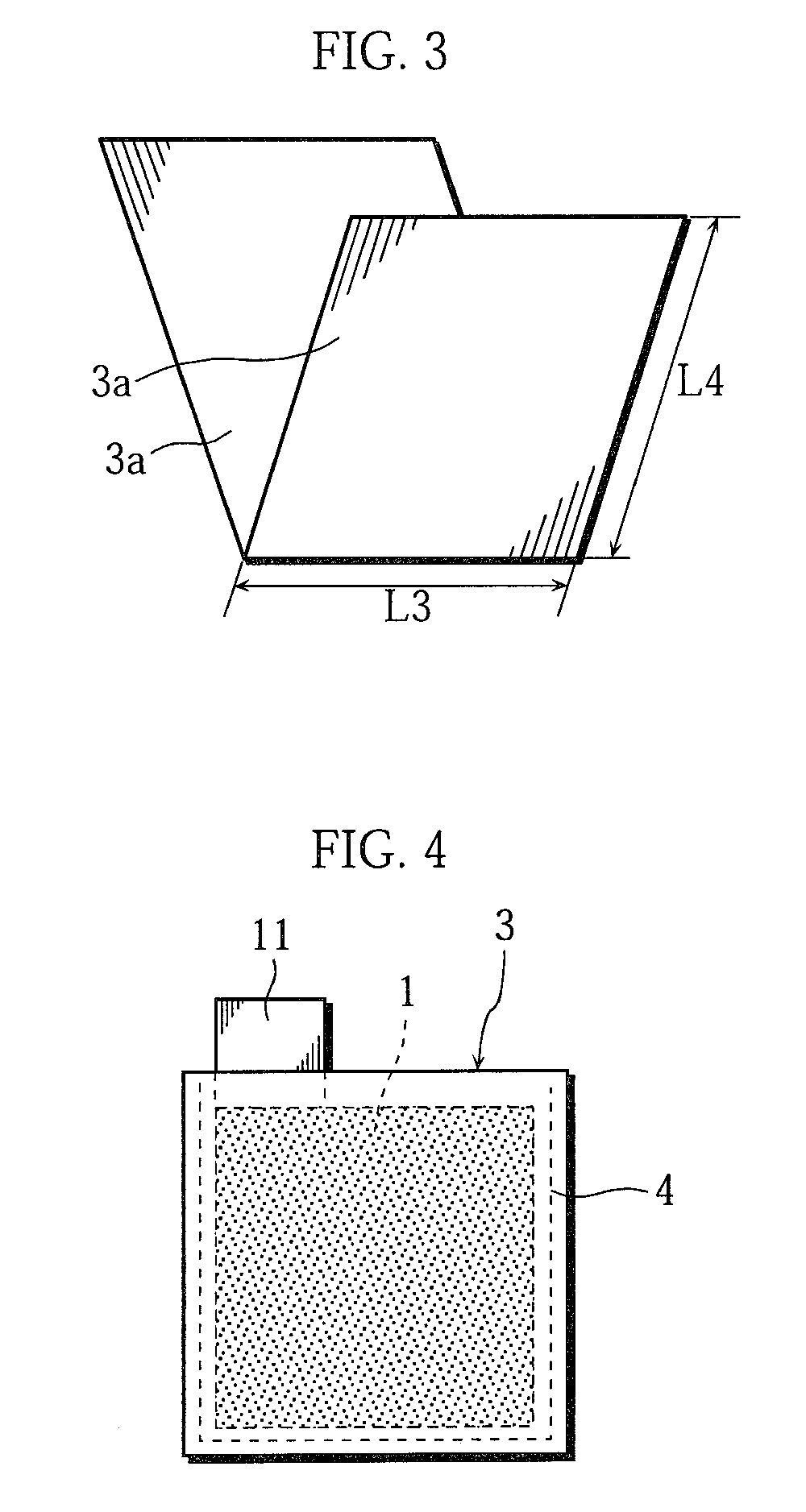Battery module
a battery module and battery technology, applied in the field of batteries, can solve the problems of light weight of spacers, achieve the effects of preventing battery temperature from rising further, preventing temperature elevation or effective fire spreading of batteries
- Summary
- Abstract
- Description
- Claims
- Application Information
AI Technical Summary
Benefits of technology
Problems solved by technology
Method used
Image
Examples
first example
Example A1
[0113]A battery module fabricated in the same manner as described in the foregoing embodiment was used as the battery module of Example A1.
[0114]The battery module thus fabricated is hereinafter referred to as a battery module A1.
example b1
[0115]A battery module was fabricated in the same manner as described in Example A1 above, except for using B-type spacers 52 that were prepared in the following manner, in place of the A-type spacers 51 used in Example 1.
[0116]Plate materials made of polyethylene terephthalate (PET), each having a thickness of 1 mm, were bonded together to form a square-shaped pouch-type container, and water was filled therein as liquid. Lastly, a Bi—Cd—Pb—Sn alloy (with a mass ratio Bi:Cd:Pb:Sn=50:10:25:15 and a melting point of 75° C.) formed into a small piece with dimensions of 5 mm×10 mm×0.5 mm was bonded as a lid to one end of one peripheral edge of the pouch-type container, as illustrated in FIG. 9, to form a low-melting point portion 14. Thus, a spacer 52 (hereinafter referred to as a “B-type spacer”) in which liquid was enclosed was prepared. The spacer 52 had a width of 120 mm, a height of 150 mm, and a thickness of 5 mm.
[0117]The battery module fabricated in this manner is hereinafter re...
second example
Preparation of Pouch-Type Container
[0123]As illustrated in FIG. 11, plate materials made of polyethylene terephthalate (PET) were bonded to form a square-shaped pouch-type container. Through holes each with a diameter of about several millimeters were formed at two locations in one of the plate materials that formed one side of the pouch-type container, one location being at a lower end of the container and the other location being at a central portion thereof that is located above the lower location and spaced at a gap S11=50 mm therefrom. Next, water as liquid was filled in the pouch-type container from the just-mentioned through holes. Thereafter, a Bi—Cd—Pb—Sn alloy (with a mass ratio Bi:Cd:Pb:Sn=50:10:25:15 and a melting point of 75° C.) was formed into small pieces each with dimensions of 10 mm×10 mm×0.5 mm to form lids. The lids were bonded by adhesive so as to cover the upper and lower through holes. Thereby, two low-melting point portions 15L and 15H were formed so as to be...
PUM
 Login to View More
Login to View More Abstract
Description
Claims
Application Information
 Login to View More
Login to View More - R&D
- Intellectual Property
- Life Sciences
- Materials
- Tech Scout
- Unparalleled Data Quality
- Higher Quality Content
- 60% Fewer Hallucinations
Browse by: Latest US Patents, China's latest patents, Technical Efficacy Thesaurus, Application Domain, Technology Topic, Popular Technical Reports.
© 2025 PatSnap. All rights reserved.Legal|Privacy policy|Modern Slavery Act Transparency Statement|Sitemap|About US| Contact US: help@patsnap.com



